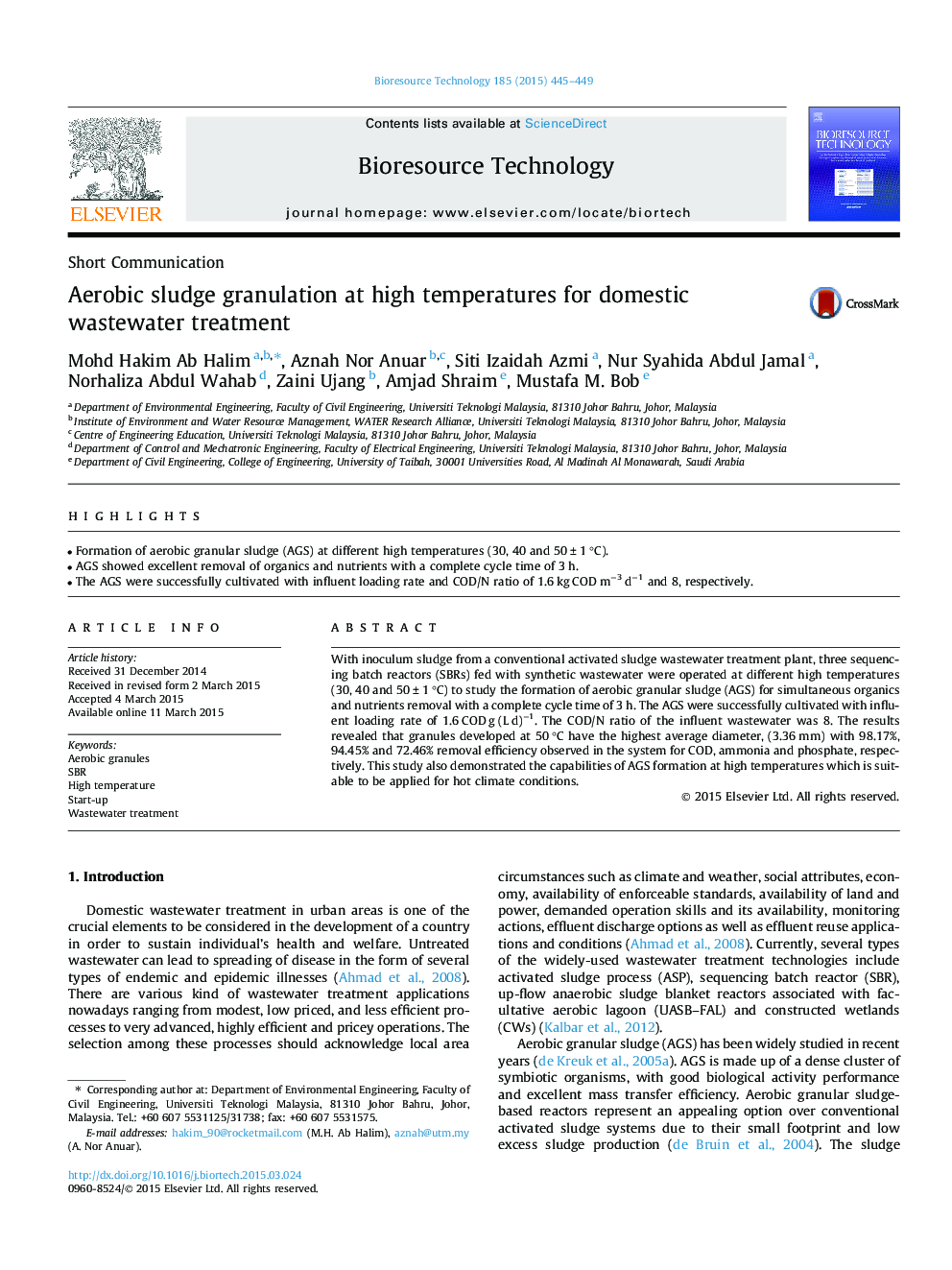| کد مقاله | کد نشریه | سال انتشار | مقاله انگلیسی | نسخه تمام متن |
|---|---|---|---|---|
| 679857 | 1459958 | 2015 | 5 صفحه PDF | دانلود رایگان |
• Formation of aerobic granular sludge (AGS) at different high temperatures (30, 40 and 50 ± 1 °C).
• AGS showed excellent removal of organics and nutrients with a complete cycle time of 3 h.
• The AGS were successfully cultivated with influent loading rate and COD/N ratio of 1.6 kg COD m−3 d−1 and 8, respectively.
With inoculum sludge from a conventional activated sludge wastewater treatment plant, three sequencing batch reactors (SBRs) fed with synthetic wastewater were operated at different high temperatures (30, 40 and 50 ± 1 °C) to study the formation of aerobic granular sludge (AGS) for simultaneous organics and nutrients removal with a complete cycle time of 3 h. The AGS were successfully cultivated with influent loading rate of 1.6 COD g (L d)−1. The COD/N ratio of the influent wastewater was 8. The results revealed that granules developed at 50 °C have the highest average diameter, (3.36 mm) with 98.17%, 94.45% and 72.46% removal efficiency observed in the system for COD, ammonia and phosphate, respectively. This study also demonstrated the capabilities of AGS formation at high temperatures which is suitable to be applied for hot climate conditions.
Journal: Bioresource Technology - Volume 185, June 2015, Pages 445–449
